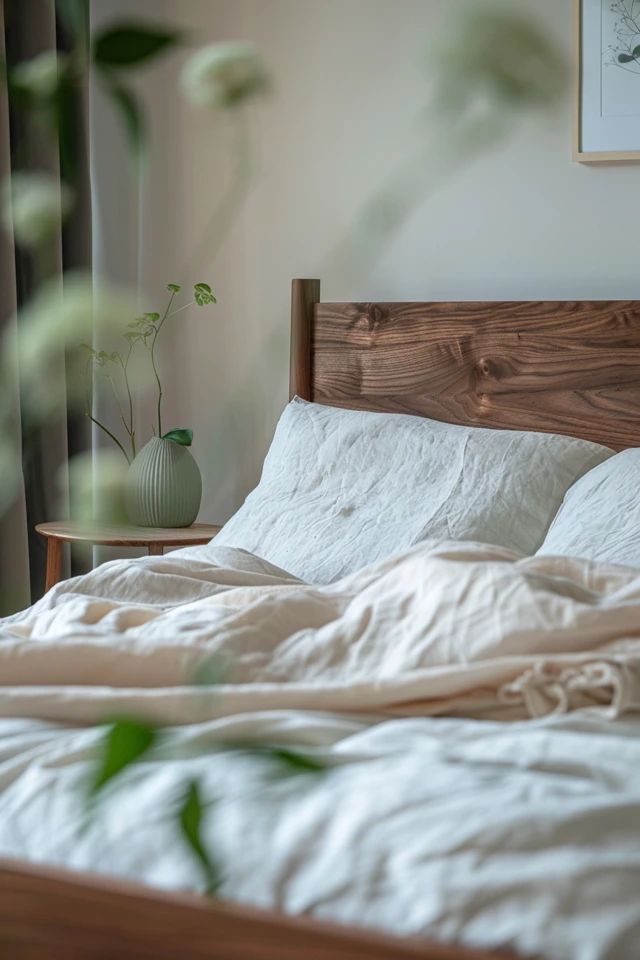A common issue in many bedrooms is the gap that forms between two mattresses or between the mattress and the headboard or wall. These gaps can cause pillows to slip through, disrupt sleep, and even pose a safety concern for young children. Understanding the purpose and types of mattress gap fillers is essential in selecting or creating the right solution.
One effective option is a mattress wedge gap filler, which has an angled design to fit snugly into the gap and prevent pillows from slipping. DIY mattress gap fillers can also be created using materials like foam, upholstery batting, or high-density fiberfill. It is important to choose the right filler material based on factors like comfort, durability, and safety. Properly securing the gap filler is crucial to ensure it stays in place, and options include using Velcro strips, non-slip backing, or tight-fitting sheets.
If DIY solutions aren’t suitable, there are commercial gap fillers and bed bridges available. Regular cleaning, inspection for wear, and proper storage are important for maintaining and caring for DIY mattress gap fillers. By following these steps and ideas, a well-made DIY mattress gap filler can significantly enhance your bed’s comfort and functionality.
Key Takeaways:
- Use a mattress wedge gap filler or create a DIY filler using materials like foam or fiberfill to eliminate gaps between the bed and wall.
- Ensure the filler is secure by using Velcro strips, non-slip backing, or tight-fitting sheets.
- Consider commercial gap fillers or bed bridges if DIY solutions are not suitable.
- Maintain and care for DIY mattress gap fillers by regularly cleaning, inspecting for wear, and proper storage.
- Choose the right filler material based on factors like comfort, durability, and safety.

How To Fill Gap Between Headboard And Mattress
The gap between the headboard and mattress is often overlooked, but it can impact both comfort and aesthetics in the bedroom. One common issue is pillows falling through the gap, causing frustration during sleep. Additionally, the visible gap can be aesthetically displeasing. Understanding the causes of this gap and finding suitable solutions is crucial for creating a more comfortable and visually appealing sleeping environment.
Several factors can contribute to the formation of a gap between the mattress and headboard. Mismatched sizes of the mattress and headboard, improper installation, or the type of mattress used can all play a role in creating this space. To address the gap and ensure a snug fit, there are various options available.
- Mattress Wedge: A mattress wedge is specifically designed to fill the gap between the headboard and mattress. Its angled shape allows it to fit securely, preventing pillows from slipping through. This solution is convenient and effective.
- DIY Solutions: For those who prefer a more hands-on approach, DIY solutions can be created using materials like foam or rolled towels. These fillers can be customized to fit the specific dimensions of the gap and provide a temporary or permanent solution.
- Adjustable Headboards: If your headboard is adjustable, you may be able to close the gap by adjusting it to a position that eliminates the space between the headboard and the mattress.
- Commercial Gap Fillers: There are also commercially available gap fillers designed explicitly for addressing the gap between the headboard and mattress. These products offer convenience and are often designed to blend seamlessly with the bed frame and headboard.
When selecting or creating a gap filler, it is essential to measure the gap accurately to ensure a proper fit. Consider the movement of the bed and prioritize safety when choosing a solution. With the right approach, you can effectively address the gap between the headboard and mattress, enhancing both comfort and aesthetics in your bedroom.
Implementing the solutions mentioned above can help you create a more comfortable and visually appealing sleeping environment by minimizing the gap between the headboard and mattress. Whether you opt for a mattress wedge, DIY solution, or commercial gap filler, finding the right fit is crucial for a seamless and satisfying end result.

How To Fill Gap Between Mattress And Bed Frame
A gap between the mattress and the bed frame can be a frustrating problem, leading to bedding slippage and the loss of small items. Fortunately, there are several effective solutions to fill this gap and ensure a secure and comfortable sleeping surface.
One option is to use gap fillers made of foam or rubber. These fillers can be easily inserted between the mattress and bed frame, providing a snug fit and preventing slippage. DIY solutions, such as using foam padding or rolled towels, can also be effective in filling the gap and stabilizing the mattress.
Another practical solution is to use mattress grippers. These grippers are placed between the mattress and bed frame to prevent the mattress from sliding down and creating a gap. They provide a secure and stable foundation, keeping your bedding in place throughout the night.
If the bed frame is adjustable or extendable, it may be possible to adjust its position to eliminate the gap. This can be done by following the manufacturer’s instructions for adjusting the bed frame, ensuring a proper and seamless fit between the mattress and frame.
By considering the causes of the gap, using gap fillers or grippers, and making necessary adjustments to the bed frame, you can effectively fill the gap between the mattress and bed frame. This will help prevent bedding slippage, eliminate the risk of losing small items, and create a more comfortable and secure sleeping environment.


